Mopar Glory: 6 of Greatest Dodge Performance Engines Ever Made
4. Pure Domination: Dodge Viper V10
By the late-1980s, it had been many moons since Dodge had offered a rear-drive vehicle that would stand up to the best American performance cars. Sure, the “turbo Dodges” gave Mopar lovers something fun to drive, but those four-cylinder, front-wheel-drive models just didn’t answer the bell for everyone. However, in 1992, Dodge jumped to the front of the American performance world with the Viper.
Rather than roll out a competitor for the Ford Mustang or Chevrolet Camaro, Dodge set their sights much higher, taking on the best sports cars in the world. The Viper was a lightweight roadster that would have been a beast with a V8, but thanks to a cooperative project with Lamborghini, the Dodge supercar was powered by an 8.0-liter V10.

With 400 horsepower and 465 lb-ft of torque, which bested the 1992 Corvette ZR1 at 375 horsepower and 370 lb-ft of torque, making the Viper the most powerful American car on sale at that time.
As you likely know, the Viper would continue to dominate the American supercar segment, comfortably competing with European sports cars with the V10 engine. Over the years, the Viper V10 would get a bit larger and output would climb, eventually reaching 645 horsepower and 600 lb-ft of torque.

Along the way, that V10 would help Dodge set a handful of track records around the world while securing the Viper as one of the greatest American performance cars of all time.
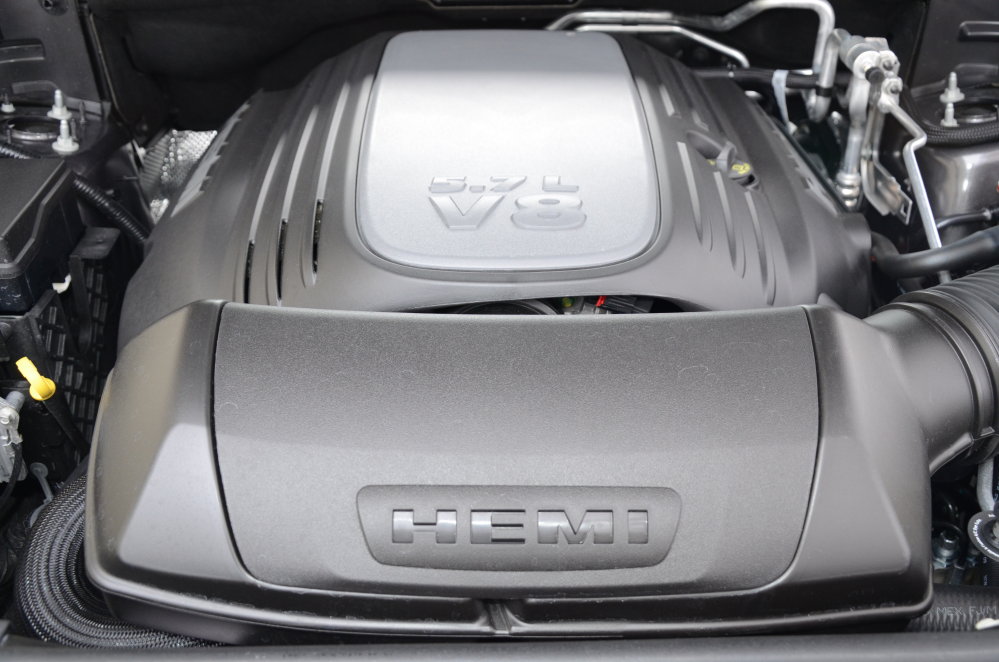
5. First Modern Hemi
In 2006, the Dodge Charger returned to the lineup in grand fashion. After several decades without an affordable rear-drive performance car, the Charger stormed onto the scene with the 5.7-liter Hemi V8. While some people would have preferred that it only have two doors, the muscular sedan was a formidable opponent on the street for the top competitors from Ford and Chevy.
With 340 horsepower and 390 lb-ft of torque, the first of the modern Hemi V8 engines was exactly what Dodge needed to return to the muscle car world. This Hemi helped the Charger quickly become very popular, as it did for the Ram 1500 in 2003 and the Chrysler 300C in 2005.
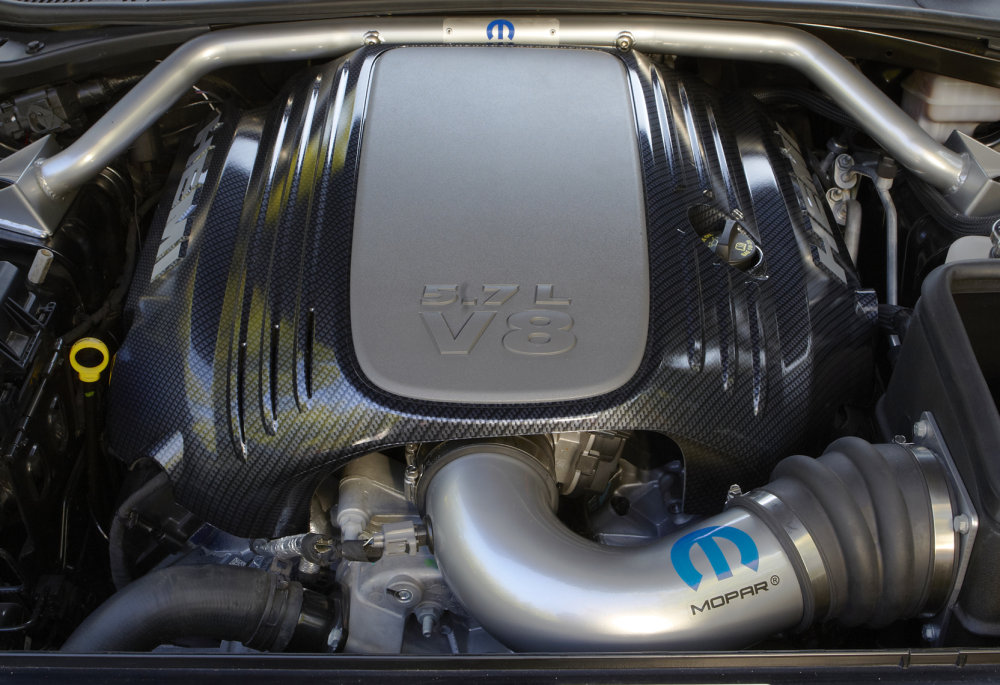
More importantly, Dodge was quickly able to coax more power out of the 5.7-liter Hemi. In 2009, the Challenger R/T would be introduced with either 372 horsepower and 398 lb-ft of torque with an automatic transmission or 375 horsepower and 404 lb-ft of torque with the manual gearbox. The Charger got a bump in power in 2009 as well, to either 368 or 372 horsepower, depending on the model and packages.
The 5.7-liter Hemi is still in use today in a variety of vehicles including the Ram 1500, the Charger, the Challenger, the Durango, the Jeep Grand Cherokee and the Chrysler 300. Power levels vary from model to model, but the Challenger R/T continues to offer the most powerful variation at 375 horsepower and 410 lb-ft of torque.

This has easily been the most popular V8 engine from the Chrysler group in decades and more importantly, this first modern Hemi led to a lineup of related engines that have been featured in some of the most powerful American cars ever.
Patrick Rall images for DodgeForum
5. Pure Domination 2.0: The Supercharged, 6.2-liter Hellcat
In 2014, the Dodge launched an atomic bomb on the American performance car world in the form of the Dodge Challenger SRT Hellcat. The monster muscle car was introduced at the New York Auto Show with its supercharged 6.2-liter engine, but no power figures were offered at that point. The company said that it would have at least 600 horsepower, but later that year, we learned that 600 horsepower was a very low estimate.
When the official power rating for the Hellcat Hemi was introduced, the American performance world stood still. With 707 horsepower and 650 lb-ft of torque, the Hellcat Hemi was the first American production road engine with more than 700 horsepower, making the Challenger the most powerful muscle car ever.
A short time later, the Hellcat Charger was introduced, making it the most powerful sedan in the world.
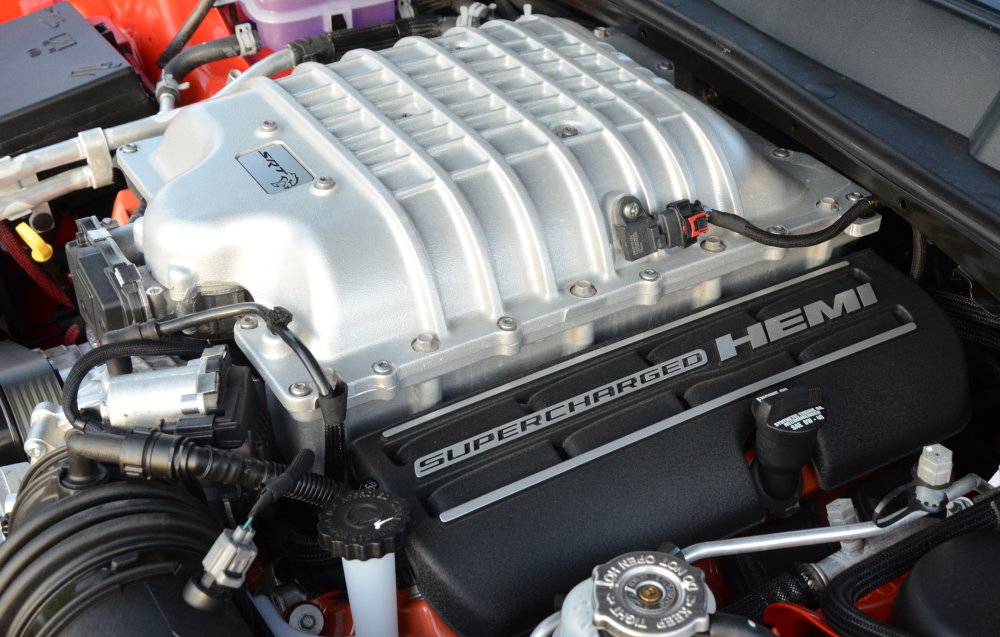
The Hellcat Hemi with 707 horsepower allowed the Challenger and Charger to dominate each of their segments, but Dodge wasn’t done. In 2018, a higher performance variation of the Hellcat Hemi was featured in the Challenger Demon, delivering a whopping 840 horsepower on 100-octane race gas.
Even on pump gas, it offered 808 horsepower, once again making the Dodge Challenger the most powerful American road car ever.
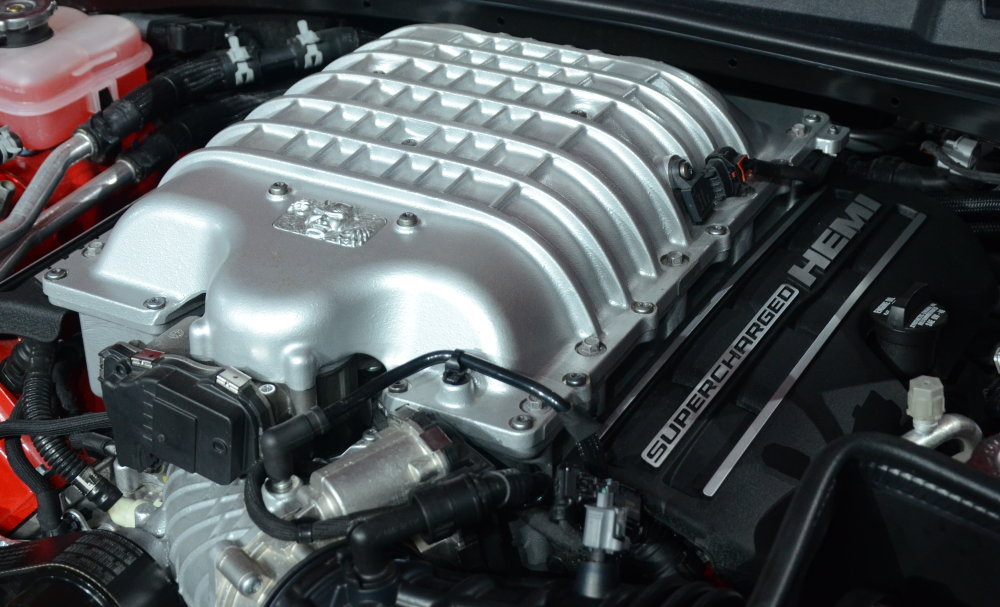
Following the Demon, Dodge rolled out the 797-horsepower Challenger Redeye and for 2021, the Charger Redeye will come to market. Also, Dodge introduced the Challenger Super Stock for 2020 with 807 horsepower, making it the first full production American road car with more than 800 horsepower.
Although the original Hellcat Hemi has been trumped by higher performance versions of itself, it is already a legend in the American performance car world. In addition to being incredibly powerful, the Hellcat-powered Dodge vehicles were priced in a way that made them more accessible to a greater number of buyers, allowing the brand to sell more than 50,000 cars with the supercharged Hemi.
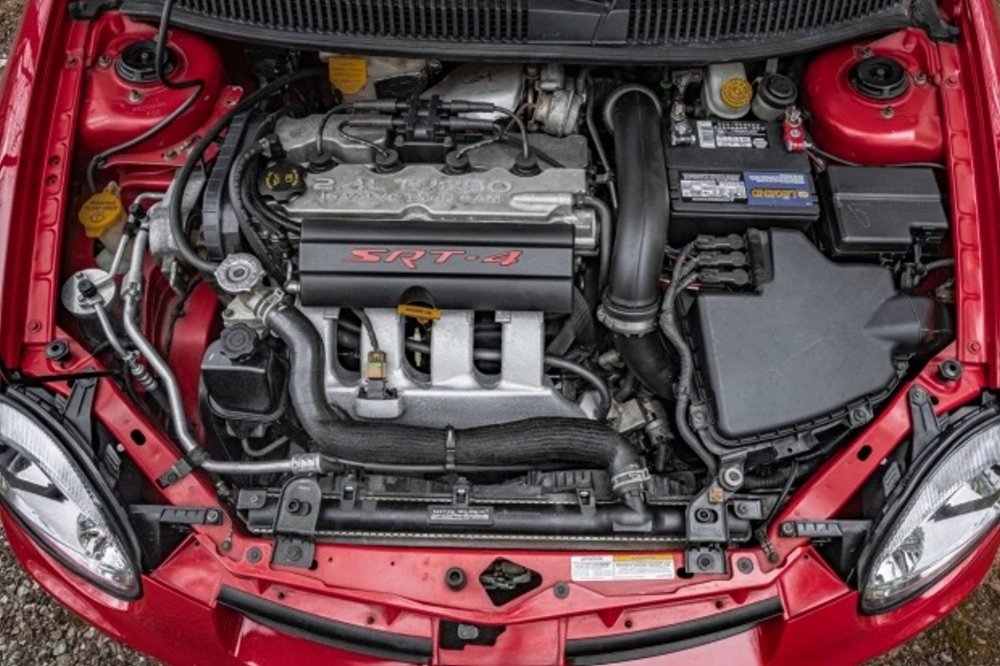
Honorable Mention – Neon SRT4 Turbo 2.4L
Finally, while we clearly focused on the big-power V8s, we have to give an honorable mention to the turbocharged four-cylinder engine in the Neon SRT4. When Dodge introduced the sporty compact sedan for 2003, it had been quite a few years since the brand had offered anything that would keep up with the Ford Mustang or Chevy Camaro. While the SRT4 took a very different approach to performance, being a small, front-wheel-drive sedan with a turbocharged four-cylinder, it was comfortably capable of competing with the new Mustang of the era.
This was especially true when the 2004 models were introduced with 230 horsepower and 250 lb-ft of torque, but there was another story with the Neon SRT4. The Mopar performance division created three “stage kits” that increased the output considerably.
Stage 1 lifted the official numbers to 240 horsepower and 260 lb-ft of torque. Stage 2 would get the compact sedan up to 280 horsepower and 300 lb-ft of torque and Stage 3 yielded 355 horsepower and 365 lb-ft of torque. Needless to say, with 355 horsepower, the small sedan had no issue beating the cross-town rivals.
While the turbocharged four-cylinder engines are often overlooked in the modern Hemi era, this engine played a key role in giving Mopar fans something fun to drive in the mid-2000s. The engine in the picture above is from a 2005 Neon SRT-4 that failed to sell on Bring-A-Trailer earlier this year.
Photos for Dodge Forum by Patrick Rall


